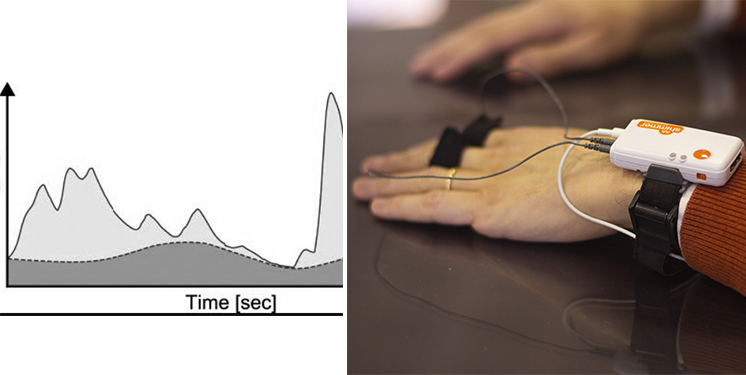The Galvanic Skin Response (GSR), also known as Electrodermal Activity (EDA) and Skin Conductance (SC), is recorded with a technology which relies on two electrodes, generally placed at the second and third finger of one hand, to capture the continuous variations in terms of electrical characteristics of the skin, i.e. the conductance, caused by the variation of the human body sweating. The variation of a low-voltage applied current between the two electrodes is used as measure of the GSR.
The recent technological development of the context healthcare devices, including wearable items such as wristbands and smartwatches, has made such measures increasingly accessible within the neuroscience domain, even in non-laboratory settings.
The traditional theory of the GSR analysis is based on the assumption that skin resistance varies with the state of sweat glands in the skin and human body sweating is regulated by the Autonomic Nervous System (ANS). Such system is directly involved in the emotional behavioural regualation in the humans. In particular, if the sympathetic branch (SNS) of the autonomic nervous system is highly aroused, then sweat gland activity also increases, which in turn increases skin conductance, and vice versa. Therefore, skin conductance can be a measure of the human Sympathetic Nervous System responses.
Additional scientific studies highlighted the relationship between GSR signal and some specific mental states, such as stress, drowsiness and engagement.
In BrainSigns it is applied to infer arousal or stress level or as a dimension for emotion evaluation.









